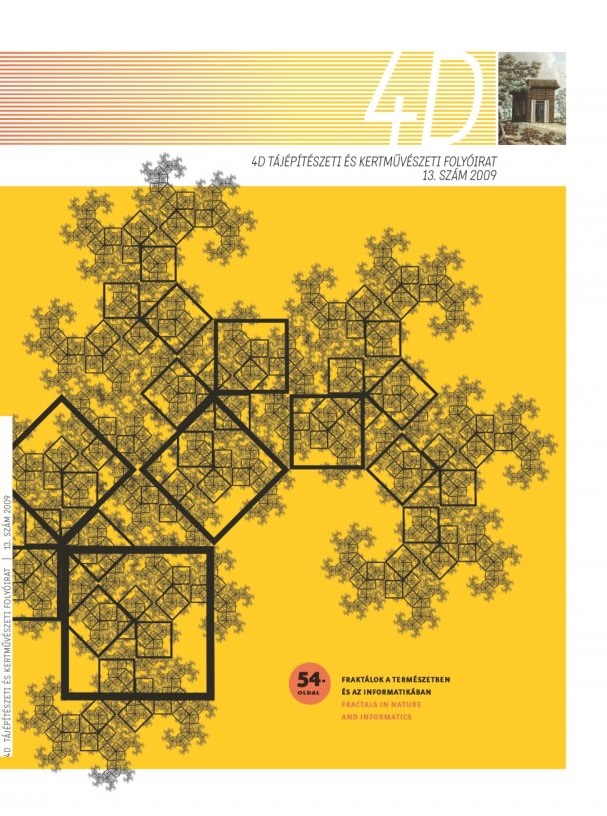Fractals in nature and informatics
Keywords:
fractal, natureAbstract
Geometric desription of natural objects is probably as old as the Science itself. Usually common , simple object (spheres, rectangles, squares and cubes etc.) are used to depict everyday objects. However, there are natural objects that cannot be described by Euclidean geometry.
As Benoit Mandelbrot said in his famous work: "Clouds are not spheres, mountains are nőt cones, coastlines are nőt circles, and bark is nőt smooth, nor does lightning travel in a straight line."(Mandelbrot, 1983}.
Most natural object seems to be so chaotic, that exact mathematical description of them is impossible. Clouds, mountain ranges, lightning bolts, coastlines, and snow flakes. etc, appear similar at all levels of magnification. They possess a structure which is called self-similarity
(any subpart of the structure is similar to the whole objectj.Approximate fractals are easily found in natúré. These objects display self-similar structure over an extended, bút finite, scale rangé. Examples include clouds, snow-flakes, crystals, mountain ranges, river networks, cauliflower or blood vessels. Coastlines may be loosely considered fractal in nature.
Trees and ferns are fractal in natúré and can be modeled on a computer by using a recursive algorithm. The most common algorithm to compute Iterated Function Systems (IFS) fór fractals is called the chaos game. It consists of picking a random point in the pláne, then iteratively applying one of the functions chosen at random from the function system and drawing the point.
An alternative algorithm is to generate each possible sequence of functions up to a given maximum length, and then to plot the results of applying each of these sequences of functions to an initial point or shape.
Fractal patterns have been found in the paintings of American artist Jackson Poollock. While Pollock's paintings appear to be composed of chaotic dripping and splattering, computer analysis has found fractal patterns in his work. Other artists such as Max Ernst, could produce fractal-like patterns. Fractals are alsó prevalent in African art and architecture. Circular houses appear in circles of circles, rectangular houses in rectangles of rectangles, and so on. Such scaling patterns can also be found in African textiles, sculpture,
and even cornrow hairstyles. As a conclusion we can say that fractals - which are on the boundary of nature,
Science and art - are becoming more and more popular these days.
References
Mandelbrot, 1983: The Fractal Geometry of Nature, ISBN: 0716711869, Henry Holt and Company, 1983
Downloads
Published
Issue
Section
License
Copyright (c) 2024 Czinkóczky Anna

This work is licensed under a Creative Commons Attribution-NonCommercial-NoDerivatives 4.0 International License.
A folyóirat Open Access (Gold). Cikkeire a Creative Commons 4.0 standard licenc alábbi típusa vonatkozik: CC-BY-NC-ND-4.0. Ennek értelmében a mű szabadon másolható, terjeszthető, bemutatható és előadható, azonban nem használható fel kereskedelmi célokra (NC), továbbá nem módosítható és nem készíthető belőle átdolgozás, származékos mű (ND). A licenc alapján a szerző vagy a jogosult által meghatározott módon fel kell tüntetni a szerző nevét és a szerzői mű címét (BY).



